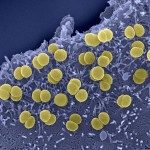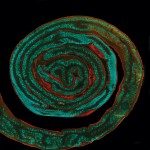Link to Pubmed [PMID] – 17893132
Infect Immun 2007 Dec; 75(12): 5609-14
The pathogenesis of meningococcal disease is poorly understood due to the lack of a relevant animal model. Moreover, the use of animal models is not optimal as most meningococcal virulence determinants recognize receptors that are specifically expressed in human tissues. One major element of the host specificity is the system of meningococcal iron uptake by transferrin-binding proteins that bind specifically human transferrin but not murine transferrin. We developed a new mouse model for experimental meningococcal infection using transgenic mice expressing human transferrin. Intraperitoneal challenge of transgenic mice induced bacteremia for at least 48 h with an early stage of multiplication, whereas the initial inoculum was rapidly cleared from blood in wild-type mice. Inflammation in the subarachnoidal space with a high influx of polymorphonuclear cells was observed only in transgenic mice. Meningococcal mutants that were unable to use transferrin as a source of iron were rapidly cleared from both wild-type and transgenic mice. Thus, transgenic mice expressing human transferrin may represent an important advance as a new mouse model for in vivo studies of meningococcal virulence and immunogenicity factors.



